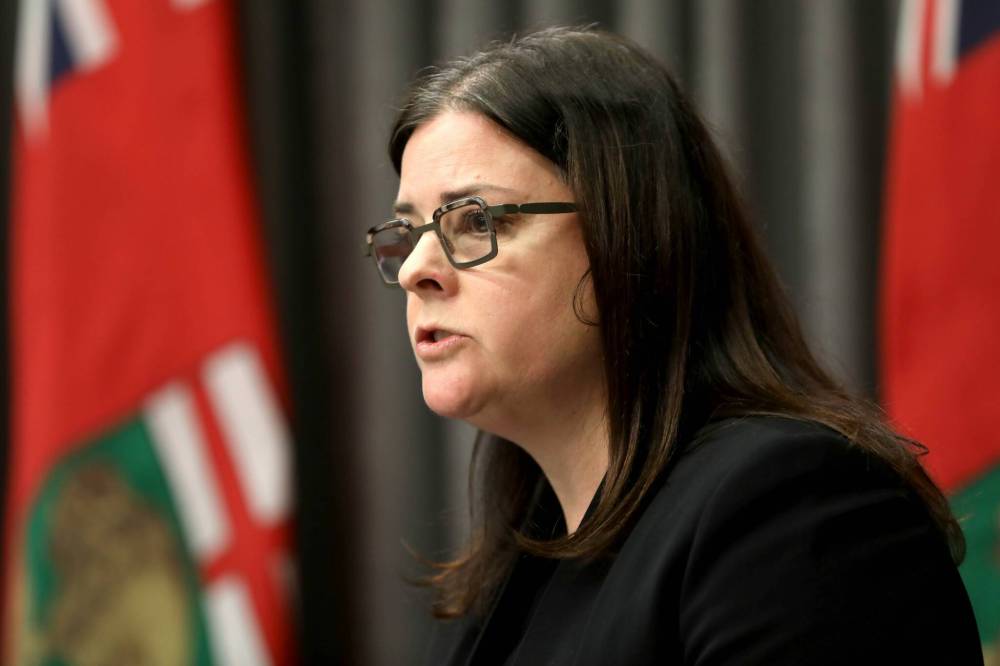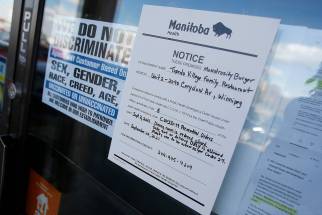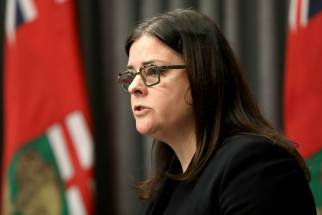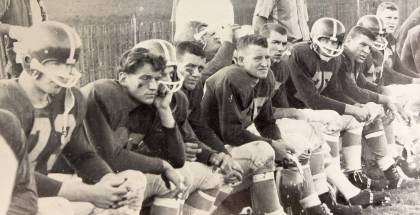Spent family doctor fleeing southeastern Manitoba Unrelenting workload, COVID-frayed relationships fuel longtime physician’s decision to move
Read this article for free:
or
Already have an account? Log in here »
To continue reading, please subscribe:
Monthly Digital Subscription
$0 for the first 4 weeks*
- Enjoy unlimited reading on winnipegfreepress.com
- Read the E-Edition, our digital replica newspaper
- Access News Break, our award-winning app
- Play interactive puzzles
*No charge for 4 weeks then price increases to the regular rate of $19.00 plus GST every four weeks. Offer available to new and qualified returning subscribers only. Cancel any time.
Monthly Digital Subscription
$4.75/week*
- Enjoy unlimited reading on winnipegfreepress.com
- Read the E-Edition, our digital replica newspaper
- Access News Break, our award-winning app
- Play interactive puzzles
*Billed as $19 plus GST every four weeks. Cancel any time.
To continue reading, please subscribe:
Add Free Press access to your Brandon Sun subscription for only an additional
$1 for the first 4 weeks*
*Your next subscription payment will increase by $1.00 and you will be charged $16.99 plus GST for four weeks. After four weeks, your payment will increase to $23.99 plus GST every four weeks.
Read unlimited articles for free today:
or
Already have an account? Log in here »
Hey there, time traveller!
This article was published 21/09/2022 (1180 days ago), so information in it may no longer be current.
An exhausted, disillusioned family doctor who has practised in a southeastern Manitoba community for more than five years is packing up and heading to Winnipeg before the end of the year.
“I mean, nobody wants to say, ‘I just can’t do this anymore,’ but part of me did,” the longtime physician, who did not want to be identified, told the Free Press Wednesday.
Serving her patients through the pandemic left her “continually faced with suspicion, if not outright hostility,” and contributed largely to her decision to leave.
“All of the ties that I have formed with the community have just been gradually frayed apart. That has been, probably, the largest part,” she said.
She joins a steady stream of physicians from rural and northern areas leaving their communities, exacerbating a shortage so urgent that advocacy group Doctors Manitoba held a summit in Portage la Prairie Wednesday to discuss the issue.
“All of the ties that I have formed with the community have just been gradually frayed apart.”
At the same time, Premier Heather Stefanson was in Selkirk to announce a $31 million expansion of the Selkirk Regional Health Centre to add 30 acute-care in-patient beds and three emergency department treatment spaces.
Doctors Manitoba president Dr. Candace Bradshaw is wondering how officials plan to fill the new positions the expansion will create.
“Our understanding is that the Selkirk hospital needed some expansion for a while. Expanding your space and updating your environment where physicians and health-care workers are working in is never a bad thing,” she said.
“But at the same time, the concern is still, who are you going to staff this space with? Where are you getting the physicians from? And that’s the whole reason we met here today, to start really homing in on recruiting and retaining physicians in rural areas.”
At the announcement in Selkirk, Stefanson said the provincial government was committed to hearing what action plans came out of the rural health summit.
RUTH BONNEVILLE / FREE PRESS FILES Premier Heather Stefanson says the provincial government is committed to hearing what action plans came out of the rural health summit. 
“We need to be out listening to doctors, listening to people in communities as to what is what is needed, what’s necessary,” she said.
Interlake-Eastern Regional Health Authority CEO Marion Ellis said it was too early to say just how many physicians would need to be retained to safely manage the expansion, which is scheduled to be completed by late 2024.
Doctors Manitoba has cited the province’s physician shortage in rural and northern areas as especially concerning. Burnout, a leading factor in the struggle to retain doctors, is being cited as an issue by nearly half of Manitoba’s physicians.
Data collected by the advocacy group has revealed 40 per cent of physicians are planning to retire, reduce their hours or leave their practice within the next three years.
Clinics in the southeastern health region have lost a significant number of physicians within the past year to retirements, maternity leaves and relocations both inside and out of the province, the family doctor said.
“Having all the extra shifts at the hospital, as well as an increase in walk-in shifts so that you can support your colleagues doing their (own hospital) shifts (was) very fatiguing.”
“That’s not even covering all of the nurses (whose) backs were broken by endless days,” she added.
Manitoba has the lowest number of family doctors per capita in Canada, according to data from the Canadian Institute for Health Information.
As walk-in clinics have had to cut their hours, patients from larger rural centres who aren’t able to get access to family doctors are travelling to smaller communities, straining limited resources even further.
“I hate saying this, (but) we often make decisions that are reflective of a lower number of bodies present,” she said, adding family doctors have been forced to take on greater urgent-care responsibilities.
“Having all the extra shifts at the hospital, as well as an increase in walk-in shifts so that you can support your colleagues doing their (own hospital) shifts (was) very fatiguing.”
“I would go in every day already feeling like I was doing a job that was draining and that I was bad at.”
And that began to seep into interactions with patients.
“I would go in every day already feeling like I was doing a job that was draining and that I was bad at — I’m not saying medical errors — but I’m saying that the rewarding part, the part where you sit and have this moment of really communicating with a patient and really getting it, and both of you kind of being in sync with each other, those were gone,” she said.
At the rural health summit, which was co-organized by the Manitoba Chambers of Commerce, more than 100 participants — rural physicians, mayors of small towns, business owners and members of government — spent the day discussing how the province could bolster physician recruitment in areas outside of Winnipeg.
RUTH BONNEVILLE / FREE PRESS FILES 'What we’re hearing from physician colleagues is that they’re just hanging on by a thread,' Dr. Candace Bradshaw said.
It was the first gathering of its kind, Bradshaw said, and it ended with a list of 50 actionable ideas that will be part of further consultations, which will be followed by a final report with recommendations shared with the provincial government and made public by late October.
Ideas that stuck out to Bradshaw include setting up a province-wide triage phone line to get patients to the specialist they need faster (a system already in place in Saskatchewan) and changing the funding models for new doctors in rural areas to ease their integration into the community.
“What we’re hearing from physician colleagues is that they’re just hanging on by a thread,” she said. “Most places are on pretty thin ice, and physicians are taking this one day at a time, one hour at a time right now.”
In the meantime, the family doctor hopes the struggles she faced don’t follow her to Winnipeg.
“I know it’s not going to be perfect, but it won’t be this every day,” she said.
malak.abas@freepress.mb.ca

Our newsroom depends on a growing audience of readers to power our journalism. If you are not a paid reader, please consider becoming a subscriber.
Our newsroom depends on its audience of readers to power our journalism. Thank you for your support.







